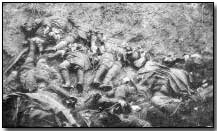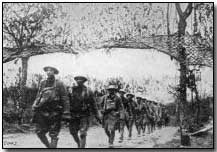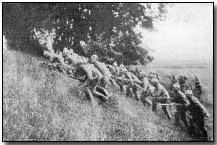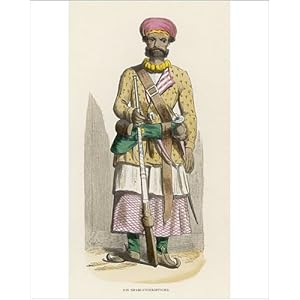 can't remember if these are Hill or Britains but I think Hill. I restored the broken rifle then added the bayonet, still got to finish the paint job though.And on second thoughts I'd better pair down the rifle as in the photo here its distorted. Back to the drawing board!!!!!!!!!!!!!!!I use a camera which blows up minute details twenty fold so I spotted something here that I didnt spot with the naked eye
can't remember if these are Hill or Britains but I think Hill. I restored the broken rifle then added the bayonet, still got to finish the paint job though.And on second thoughts I'd better pair down the rifle as in the photo here its distorted. Back to the drawing board!!!!!!!!!!!!!!!I use a camera which blows up minute details twenty fold so I spotted something here that I didnt spot with the naked eyeSunday 26 June 2011
my collection. Guards
 can't remember if these are Hill or Britains but I think Hill. I restored the broken rifle then added the bayonet, still got to finish the paint job though.And on second thoughts I'd better pair down the rifle as in the photo here its distorted. Back to the drawing board!!!!!!!!!!!!!!!I use a camera which blows up minute details twenty fold so I spotted something here that I didnt spot with the naked eye
can't remember if these are Hill or Britains but I think Hill. I restored the broken rifle then added the bayonet, still got to finish the paint job though.And on second thoughts I'd better pair down the rifle as in the photo here its distorted. Back to the drawing board!!!!!!!!!!!!!!!I use a camera which blows up minute details twenty fold so I spotted something here that I didnt spot with the naked eyeSaturday 25 June 2011
dorset yeomanry
The Queen's Own Dorset Yeomanry was founded as the Dorsetshire Regiment of Volunteer Yeomanry Cavalry in 1794. In response to the growing threat of invasion during the Napoleonic wars. It gained its first royal association in 1833 as The Princess Victoria's Regiment of Dorset Yeomanry Cavalry, and its second in 1843 as the Queen's Own Regiment of Dorset Yeomanry Cavalry.
On December 13, 1899, the decision to allow volunteer forces serve in the Second Boer War was made. Due to the string of defeats during Black Week in December, 1899, the British government realized they were going to need more troops than just the regular army, thus issuing a Royal Warrant on December 24, 

The Royal Warrant asked standing Yeomanry regiments to provide service companies of approximately 115 men each. In addition to this, many British citizens (usually mid-upper class) volunteered to join the new regiment. Although there were strict requirements, many volunteers were accepted with substandard horsemanship/marksmanship, however they had significant time to train while awaiting transport.
Friday 24 June 2011
Thursday 23 June 2011
taylor and barrett
Tuesday 21 June 2011
Monday 20 June 2011
Wednesday 15 June 2011
us in the argonnes. "The bullshit of the internet and why you don't want to believe crap"
 soldiers by grey iron. I like the primitive look of these."By the beginning of 1918, both the Allied and German powers were on their last mile of endurance. When Russia fell into a revolution, Germany was freed from the strain of a two front war. The German High Commander, Erich Ludendorff, shifted the relieved forces to the Western Front.
soldiers by grey iron. I like the primitive look of these."By the beginning of 1918, both the Allied and German powers were on their last mile of endurance. When Russia fell into a revolution, Germany was freed from the strain of a two front war. The German High Commander, Erich Ludendorff, shifted the relieved forces to the Western Front. acoording to this article taken from the internet the first world war was won by the Americans
acoording to this article taken from the internet the first world war was won by the Americans read the crap yourself then decide.
Germany now had some thirty-five divisions poised for one grand offensive pointed toward Paris.
Using new tactics, and the experience afforded to veterans of a long war, the German Army made massive gains that had not been achieved since 1914. The French Armies were now in full retreat across the Allied lines and headed toward Paris and away from the German juggernaut.
The only thing that stood in Germany's way was the American Expeditionary Forces at Belleau Wood. The German advanced was checked by the Marines and soldiers at Belleau Wood, allowing time for the French forces to reform. The Americans sounded the bugle call that would bring the French Army back on its feet.
During the summer of 1918, the Allies were back on their game as the French and British Forces quickly patched up their wounds and remade a new line that was now getting dangerously close to Paris. The first order of business was to snub out the St. Mihiel salient that was poking out like an angry thorn into the side of the Allied line.
This fell squarely into the Americans sandbox as they went into their first real front line action. By September of 1918, the Allied line finally regained some of its territory that it had lost to the German advance earlier in the year.
Decisive Victory
Though the Allies didn't know it, Germany was now in the corner. Everything was much the same as it was a year ago, with one vital exception. There was a whole new Army on the southern flank of the Western Front. The American 1st Army was under General Pershing and now the Allies felt it was time to make good on its new numerical superiority.
Using several ruses to deceive the Germans into thinking the offensive would head toward Metz in the north, the US 1st Army began to form in the area between the Meuse River and the Argonne Forest.
At 5:30 on the afternoon of September 26th, the American 1st Army jumped off with the French holding their flanks. Following a rolling barrage of artillery fire, the US 1st Army crashed through the German defences. The US 3rd Corps pushed its way into the Germans second defensive line but the 5th Corps got stopped at Montfaucon during the first day.
 The Germans rushed six divisions into the line to try to plug the hold. By the end of the day, the US Army had not gotten very far, but in the overall theatre of war, it didn't need to.
The Germans rushed six divisions into the line to try to plug the hold. By the end of the day, the US Army had not gotten very far, but in the overall theatre of war, it didn't need to.Up in the north, the British Armies under General Plumer were now beginning their own push into German territory. Due to the deteriorating situation that the Americans had produced, they had recaptured the Passchendaele Ridge which they so bloodily lost the year before.
To Erich Ludendorff, the situation was turning from bad to worse. He now found himself trying to plug all the holes in the line and with no forces left to plug them with. By October 6th, three British Armies smashed their way to the Hindenburg line, the last German line of defence, but they were to spent to make past it. At around the same time, General Pershing took his most veteran divisions and squeezed out Montfaucon and tried to restart the offensive.
General Pershing now had to get through the Argonne forest to get to the breakout which the Allies wanted and needed. However, the Germans threw a brick wall in the way of the American advance in the Argonne Forest. The 77th Division took a heavy toll in the Argonne Forest and now the Germans threw everything they had left into holding the US 1st Army back. The 28th Division was having a better day and instead went down the Aire Valley and captured Varennes.
The Germans had nothing left in reserve now to strengthen the line, and now the Allies were putting more and more pressure into the battle. Feeling instead of knowing that this time, the end was near.
Time was now working on the side of the Allies, for every day the Germans tried to hold their line, more and more Allied Divisions were going into the fray. Erich Ludendorff, now reported to the Kaiser that it was now lost and to sue for peace. The British Armies, now backed by the French were banging on the front door and the Americans were about to crash through the back door.
 By the beginning of November, the American 1st Army was still blocked by the Argonne Forest which was being held staunchly by the Germans, even though everywhere else the line was finally buckling to the Allied onslaught.
By the beginning of November, the American 1st Army was still blocked by the Argonne Forest which was being held staunchly by the Germans, even though everywhere else the line was finally buckling to the Allied onslaught.At 11:00 AM on November 11th, the battle ended with the signing of the cease fire and the Armistice. The US 1st Army by that point had bludgeoned its way around the Argonne Forest and made its way to the Hindenburg line and was about to open another operation toward Metz.
Aftermath
What was the effect of the US involvement during this campaign? Well, it was drawn down to simple numbers and the fact that the Germans couldn't be everywhere at once. The Americans began the first of several advances that first pushed back, then broke the German line in the Western front. What the Allies were trying to achieve in over four years of brutal trench warfare, the Americans had done in only two months.
The American Army had become the anvil to the Allied hammer blow in the Western Front. By the end of the Meuse-Argonne offensive, there were 1.3 millions American troops on French soil that were in the front or heading to it.
The signing of the Treaty of Versailles was the beginning of another chapter of world history. A chapter of irony, blood and sorrow. A chapter of paths forgotten, and the price of treading down such paths. Paths, made of fire."
There you have it folks , the war was won by the Americans and not the amiens offensive
Saturday 11 June 2011
sepoys
 The East Indian Company's main goal in India was to make money. At the same time the company didn't exactly work to improve the living conditions of the people. By the early 1800s, British officials had spread western education and legal procedures. People known as missionaries tried to convert Indians to Christianity. Missionaries had the idea that Vhristianity was superior to Indian religions. The British also wanted social change. They tried to end slavery and the caste system and to improve women's positions in the household. One law that the company outlawed was sati, this was the custom mainly performed by the upper class Hindus, it required a widow to join her husband after his death by throwing herself on his funeral fire.During the 1850s, The East Indian Company made some choices and decisions that were very unpopular, and to some a disrespect to the Hindu religion. To begin with, they required sepoys, these were Indian soldiers in its service , to serve anywhere, this couldbe either in India itself or overseas. To most Hindus, traveling overseas was a major offense to their religion.
The East Indian Company's main goal in India was to make money. At the same time the company didn't exactly work to improve the living conditions of the people. By the early 1800s, British officials had spread western education and legal procedures. People known as missionaries tried to convert Indians to Christianity. Missionaries had the idea that Vhristianity was superior to Indian religions. The British also wanted social change. They tried to end slavery and the caste system and to improve women's positions in the household. One law that the company outlawed was sati, this was the custom mainly performed by the upper class Hindus, it required a widow to join her husband after his death by throwing herself on his funeral fire.During the 1850s, The East Indian Company made some choices and decisions that were very unpopular, and to some a disrespect to the Hindu religion. To begin with, they required sepoys, these were Indian soldiers in its service , to serve anywhere, this couldbe either in India itself or overseas. To most Hindus, traveling overseas was a major offense to their religion. After this the East Indian Company passed a law that allowed Hindu widows to remarry. From a Hindus point of view, these were seen as moves to undermine Indian beliefs. In 1857, the British issued new rifles to the sepoys. Troops were ordered to bite of the cartridges before loading them into the arms. This cartridges were greasd with animal fat, mainly cow and pig fat. In Hinduism, these animals are considered sacred, pig especially was forbidden to Muslims all together. When some of these troops refused the British's order they were sent home without pay. Later sources proved that this was a mistake from the British and that they never meant any disrespect. These sources also state that the animal fat cartridges were later replaced with vegetable oil fat cartridges.
After this the East Indian Company passed a law that allowed Hindu widows to remarry. From a Hindus point of view, these were seen as moves to undermine Indian beliefs. In 1857, the British issued new rifles to the sepoys. Troops were ordered to bite of the cartridges before loading them into the arms. This cartridges were greasd with animal fat, mainly cow and pig fat. In Hinduism, these animals are considered sacred, pig especially was forbidden to Muslims all together. When some of these troops refused the British's order they were sent home without pay. Later sources proved that this was a mistake from the British and that they never meant any disrespect. These sources also state that the animal fat cartridges were later replaced with vegetable oil fat cartridges.french light machine gun in the first world war was crap

The Chauchat was not comparable to the submachine guns of World War I, which used pistol rather than rifle ammunition and were thus less powerful. The Italian Villar-Perosa and Beretta Model 1918, the first two submachine guns to appear in World War I, fired the 9 mm Glisenti (a less powerful version of the 9mm Parabellum).
the first two submachine guns to appear in World War I, fired the 9 mm Glisenti (a less powerful version of the 9mm Parabellum).  The MP18 Bergmann, a German Army submachine gun fielded during the spring of 1918, fired the 9 mm Luger cartridge.
The MP18 Bergmann, a German Army submachine gun fielded during the spring of 1918, fired the 9 mm Luger cartridge.  Compared to the Chauchat, these early submachine guns were used in relatively small numbers (thousands rather than hundreds of thousands), and had much shorter effective ranges.
Compared to the Chauchat, these early submachine guns were used in relatively small numbers (thousands rather than hundreds of thousands), and had much shorter effective ranges.
 the first two submachine guns to appear in World War I, fired the 9 mm Glisenti (a less powerful version of the 9mm Parabellum).
the first two submachine guns to appear in World War I, fired the 9 mm Glisenti (a less powerful version of the 9mm Parabellum).  The MP18 Bergmann, a German Army submachine gun fielded during the spring of 1918, fired the 9 mm Luger cartridge.
The MP18 Bergmann, a German Army submachine gun fielded during the spring of 1918, fired the 9 mm Luger cartridge. Unlike much heavier air-cooled and water-cooled machine guns (such as the Hotchkiss machine gun and the various belt-fed Maxim gun derivatives), and in common with the Lewis Gun, the Chauchat was not designed for sustained defensive fire.
The tactical edge expected from the Chauchat was to increase the infantry's offensive firepower during the assault barclay with a machine gun made in hell
barclay with a machine gun made in hell
The tactical edge expected from the Chauchat was to increase the infantry's offensive firepower during the assault
 barclay with a machine gun made in hell
barclay with a machine gun made in hellWhile the performance of the M1915 Chauchat in 8MM Lebel was considered acceptable at the time, the performance of the M1918 Chauchat in .30-06 was soon recognized as abysmal (and partly the reason for the gun's bad reputation) : the common problem was a failure to extract after the gun had fired only a few rounds and became slightly hot. 
Based on archival records and recent trials, including a firing test performed at Aberdeen Proving Grounds in July 1973, the adaptation of the Chauchat to use .30-06 ammunition had been compromised by incorrect chamber measurements and sub-standard manufacturing.
There has been no explanation as to why US inspectors at the Gladiator factory did not properly test fire these weapons as they were not rechambered M1915's but actually a whole new weapon based on the Chauchat design. The US Army is known for its thoroughness in testing weapons, but in this case either negligence or else the advanced knowledge that the Browning Automatic Rifle (BAR) would soon replace the Chauchat, anyhow,may have played a role.
Only small numbers of the .30-06 Chauchat ever reached the front lines and they were immediately discarded by the troops as useless as they would only fire a few magazines before heating up and ceasing to function. As a result, the Chauchats in 8mm Lebel continued to be used by the AEF.TRBN8rTdG+c!~~0_3.JPG) Supplies of the newly manufactured and superior Browning Automatic Rifle (BAR) were allocated sparingly and very late, during the Meuse-Argonne offensive which begun in late September 1918. About 75% of the U.S. Divisions were still equipped with the Chauchat - in its original French M1915 version - at the Armistice of November 11, 1918.
Supplies of the newly manufactured and superior Browning Automatic Rifle (BAR) were allocated sparingly and very late, during the Meuse-Argonne offensive which begun in late September 1918. About 75% of the U.S. Divisions were still equipped with the Chauchat - in its original French M1915 version - at the Armistice of November 11, 1918. 
It is also well documented that General Pershing had been holding back on the BAR until victory was certain, for fear it would be copied by Germany (Ayres, 1919). ( wilson edward lewis gun
wilson edward lewis gun
Other accounts, however, state that the reason that the BAR didn't see much combat was because the first units equipped with them simply didn't arrive until September.)[citation needed] However, it is also known that the very first BAR's delivered had improperly tempered recoil springs and had these guns been prematurely introduced during the summer of 1918, they might have also been viewed as problematic
However, it is also known that the very first BAR's delivered had improperly tempered recoil springs and had these guns been prematurely introduced during the summer of 1918, they might have also been viewed as problematic
Only small numbers of the .30-06 Chauchat ever reached the front lines and they were immediately discarded by the troops as useless as they would only fire a few magazines before heating up and ceasing to function. As a result, the Chauchats in 8mm Lebel continued to be used by the AEF.
It is also well documented that General Pershing had been holding back on the BAR until victory was certain, for fear it would be copied by Germany (Ayres, 1919). (
 wilson edward lewis gun
wilson edward lewis gunOther accounts, however, state that the reason that the BAR didn't see much combat was because the first units equipped with them simply didn't arrive until September.)[citation needed]
 However, it is also known that the very first BAR's delivered had improperly tempered recoil springs and had these guns been prematurely introduced during the summer of 1918, they might have also been viewed as problematic
However, it is also known that the very first BAR's delivered had improperly tempered recoil springs and had these guns been prematurely introduced during the summer of 1918, they might have also been viewed as problematic
Friday 3 June 2011
Thursday 2 June 2011
Wednesday 1 June 2011
Subscribe to:
Posts (Atom)


















